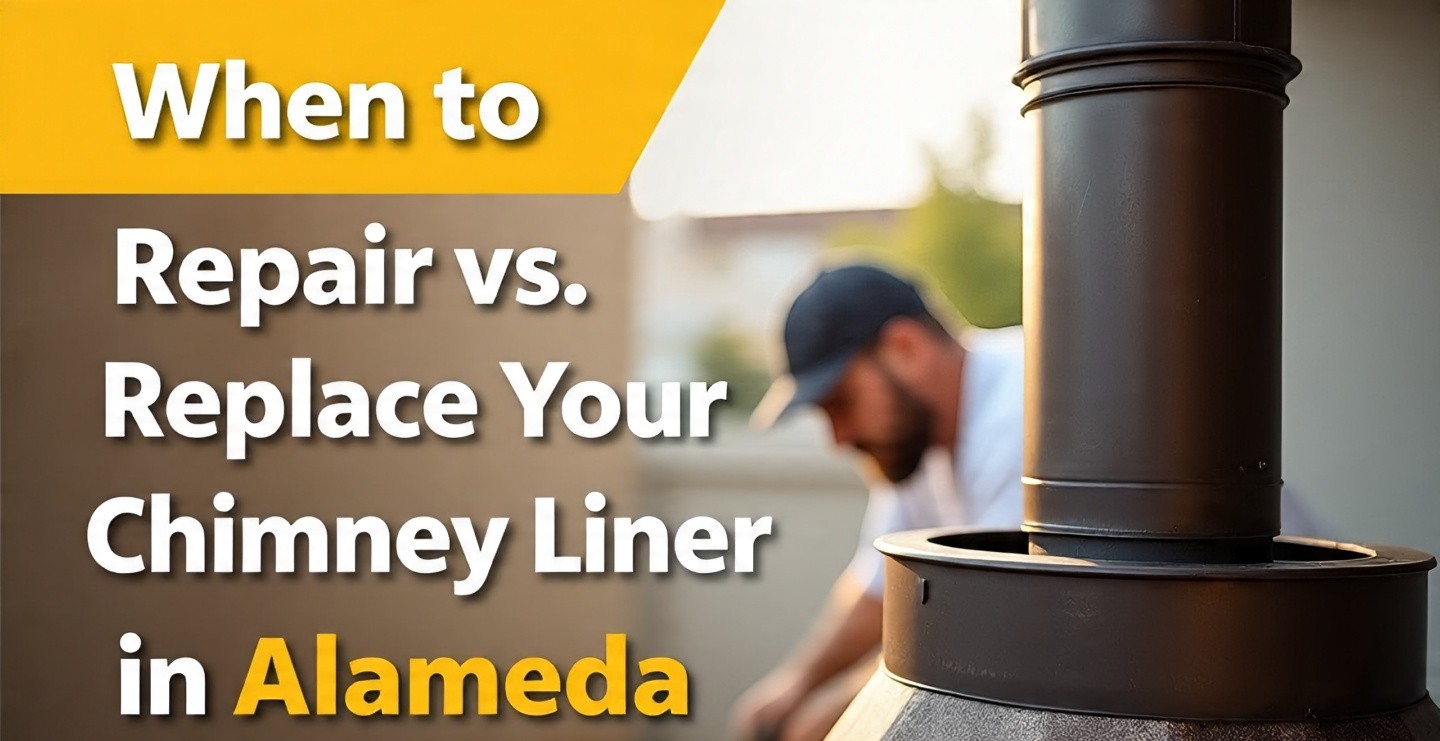If you’ve ever cozied up by a fire on a foggy Alameda night, you know how important a well-functioning chimney is. But what about the part you can’t see—the chimney liner? It’s easy to forget about this hidden hero until you start smelling smoke indoors or find bits of debris in your fireplace. Many homeowners aren’t sure when to fix a chimney liner and when it’s smarter (or safer) to switch it out entirely. Let’s walk through the signs, choices, and local considerations, so you’re not left guessing when it comes to your chimney liner in Alameda.
What Does a Chimney Liner Actually Do?
You might not think about your chimney liner often, but it’s a big deal for anyone with a fireplace or wood stove. In simple terms, the liner is like a protective tube running up the inside of your chimney. It keeps heat, smoke, and nasty gases from sneaking into the walls of your house. Without it, you’re risking more than just a messy clean-up—you could be setting yourself up for some serious safety problems.
“A chimney liner may be out of sight, but never let it be out of mind—your safety depends on it.”
Key Features: Repair or Replace?
Not all chimney liners are built the same, and their condition depends on what they’re made of, how often you use your fireplace, and how old your home is.
Here are some key things to check for when you’re deciding whether to repair or replace:
| Feature | Repair | Replace |
|---|---|---|
| Cracks or Small Gaps | Sealant or patching can help if the damage is minor and localized. | If cracks are widespread or deep, replacement is usually safer. |
| Corrosion or Rust | Small rusty spots might be treated, but only if the liner’s structure is intact. | Significant corrosion means the liner has weakened—time to replace. |
| Missing Tiles or Sections | Replacing individual tiles is possible for clay liners if damage is minimal. | Large gaps or several missing tiles? Full replacement is best. |
| Age of Liner | If under 15 years and well-maintained, repairs can extend life. | Over 20 years or unknown age? New liner could prevent future headaches. |
Safety: Don’t Gamble With Your Home
When it comes to chimney liners, safety should always come first. Any damage to the liner can let heat or carbon monoxide leak into your living space. Even a small crack can allow flammable soot to build up behind the walls. If you notice smoke backing up into your living room or a strange smell coming from your fireplace, don’t wait. These are clear red flags that something’s not right.
In Alameda, where older homes are common and damp coastal air can speed up wear and tear, regular checks are even more important. If a professional finds serious damage, replacing the liner is often the only way to truly protect your home and family.
Cost: Balancing the Budget
Money always plays a role when it comes to home maintenance. Repairing a liner is usually less expensive than replacing it, especially if the problem is small and caught early. Simple fixes like patching small cracks or replacing a few tiles won’t break the bank. But, if repairs start to add up—say, you’re fixing something every year—it might be more cost-effective to invest in a new liner.
Alameda homes sometimes require custom solutions due to their unique architecture. That can bump up the price, but it’s worth it for peace of mind. Compare the costs, but remember: putting off a replacement when you really need one can lead to much bigger expenses down the road, like chimney fires or smoke damage.
Emergency Service: When to Act Fast
Some chimney liner problems can wait a week or two, but others need immediate attention. If you spot chunks of liner in your fireplace, smell something burning besides wood, or notice smoke where it shouldn’t be, call for help right away. In Alameda, there are emergency services that specialize in chimney issues. Don’t ignore warning signs—when it comes to fire and toxic gases, it’s far better to be safe than sorry.
Frequently Asked Questions
Q: How often should I have my chimney liner checked in Alameda?
Once a year is a good rule of thumb, especially before the rainy season or if you use your fireplace often.
Q: Can I repair a chimney liner myself?
It’s not recommended. Chimney liners are tricky, and mistakes can lead to dangerous situations. Always call a pro.
Q: How do I know if I need a new liner?
If your liner is old, badly damaged, or causing safety issues, it’s time for a replacement. A chimney inspection will give you a clear answer.
Q: What types of liners are available?
Clay, metal, and cast-in-place liners are the most common. The best fit depends on your chimney’s size, shape, and what kind of fuel you’re burning.
Wrapping Up: Peace of Mind for Alameda Homes
Deciding whether to repair or replace your chimney liner doesn’t have to be overwhelming. Keep an eye out for warning signs, weigh the costs, and always put safety at the top of your list. Regular checkups by a trusted professional will help you catch problems before they become emergencies. After all, a safe and sturdy chimney liner is the secret ingredient to keeping your Alameda home warm, welcoming, and worry-free.
Read More: Chimney Sweep Services



